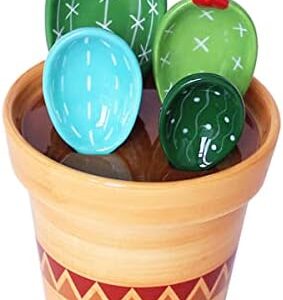When it comes to gardening, many people think you need a large backyard or a dedicated plot of land to grow your own fruits, vegetables, and flowers. But what if I told you that you could start your own garden right on your balcony, patio, or even indoors with just a few containers?
That’s right, container gardening is a fantastic way to grow your own garden, no matter how much space you have. Whether you live in a tiny apartment in the city or a house in the suburbs, you can enjoy the joys of gardening and reap the benefits of fresh, homegrown produce.
If you’re new to gardening and not sure where to start, don’t worry – I’ve got you covered. In this beginner’s guide, I’ll walk you through the basics of growing your own garden in containers, from choosing the right containers and soil to selecting the perfect plants for your space.
Choosing the Right Containers
The first step in container gardening is choosing the right containers for your plants. When it comes to containers, the possibilities are endless – you can use traditional terra cotta pots, plastic planters, wooden boxes, hanging baskets, or even repurposed items like buckets, cans, or old tires.
When selecting containers, the most important thing to consider is drainage. Make sure your containers have drainage holes at the bottom to allow excess water to escape and prevent your plants from becoming waterlogged. If your containers don’t have drainage holes, you can drill or punch holes in the bottom to ensure proper drainage.
In addition to drainage, consider the size of your containers. Larger containers will hold more soil and moisture, which can help prevent your plants from drying out too quickly. However, smaller containers can be easier to move around and are great for smaller spaces like balconies or windowsills.
Choosing the Right Soil
Once you have your containers, the next step is choosing the right soil for your plants. When it comes to container gardening, it’s important to use a high-quality potting mix specifically formulated for containers. Regular garden soil is too dense and compact for containers, which can restrict root growth and drainage.
Look for a potting mix that is lightweight, well-draining, and nutrient-rich. Avoid using garden soil or topsoil in your containers, as they can become compacted and lead to root rot. You can also add perlite or vermiculite to your potting mix to improve drainage and aeration.
Selecting the Perfect Plants
Now that you have your containers and soil, it’s time to select the perfect plants for your garden. When choosing plants for container gardening, consider the amount of sunlight your space receives, the size of your containers, and your gardening goals. Whether you’re interested in growing herbs, vegetables, flowers, or a mix of all three, there are plenty of options to choose from.
For beginners, I recommend starting with easy-to-grow plants like herbs, cherry tomatoes, lettuce, peppers, or flowers like pansies or petunias. These plants are relatively low-maintenance and can thrive in containers with proper care.
When selecting plants, consider their sunlight requirements – some plants prefer full sun, while others thrive in partial shade. Make sure to place your containers in a sunny spot that receives at least 6-8 hours of sunlight per day for optimal growth.
Caring for Your Container Garden
Once you have your containers, soil, and plants in place, caring for your container garden is simple. Here are a few tips to help your plants thrive:
1. Water regularly: Container plants dry out more quickly than plants in the ground, so it’s important to water them regularly. Check the soil moisture with your finger – if it feels dry, it’s time to water. Make sure to water deeply and thoroughly to ensure the roots receive enough moisture.
2. Fertilize regularly: Container plants can quickly deplete nutrients from the soil, so it’s important to fertilize them regularly. Use a balanced, water-soluble fertilizer to promote healthy growth and flowering.
3. Prune and deadhead: Regular pruning and deadheading can help promote new growth and prolong the flowering period of your plants. Remove dead or spent flowers to encourage new blooms and maintain the shape of your plants.
4. Monitor for pests and diseases: Keep an eye out for common pests like aphids, spider mites, or whiteflies, as well as signs of diseases like powdery mildew or blight. If you notice any issues, treat them promptly with organic or chemical controls.
Enjoying the Fruits of Your Labor
With a little time and effort, you can create a beautiful and bountiful garden right in your own home with container gardening. Whether you’re growing fresh herbs for cooking, juicy tomatoes for salads, or colorful flowers for bouquets, container gardening is a rewarding and fulfilling hobby that anyone can enjoy.
So, why wait? Start your own container garden today and experience the joy of growing your own food and flowers right at your fingertips. Happy gardening!






